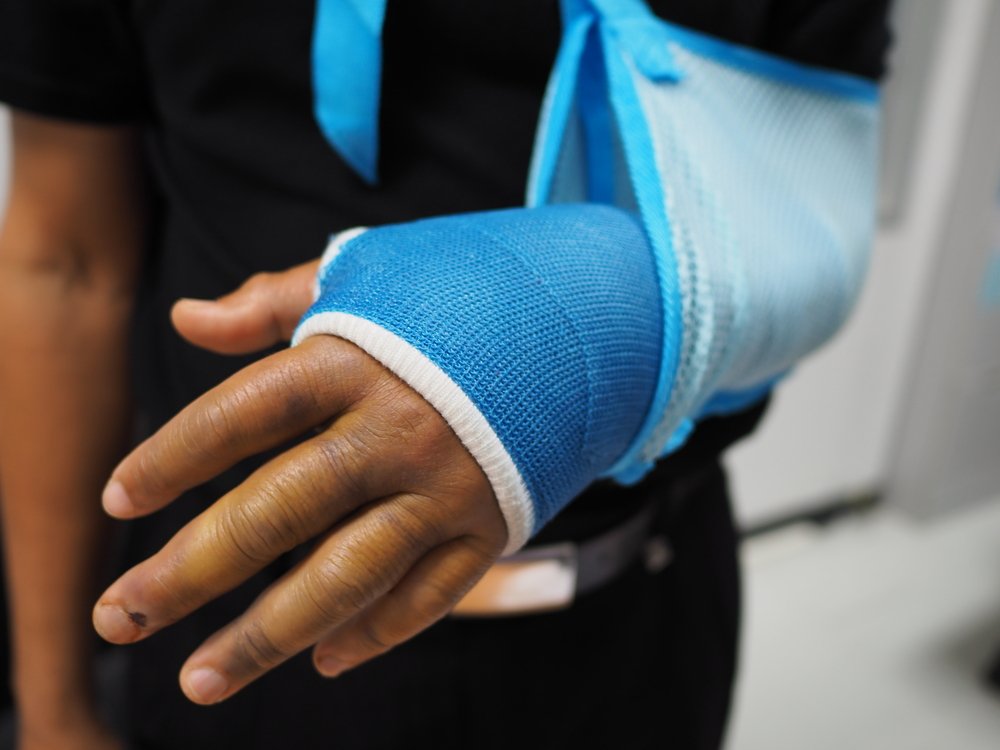Help for Victims of Bone Injuries and Fractures
It is a common misconception that a broken bone is a minor injury involving a small crack, and that a broken bone is a bone completely snapped in two. However, this is not the case. In medical terms, a broken bone is any type of cracked, broken or crushed bone, regardless of its gravity. Any bone in the body can be broken but some of the most common include a broken leg, wrist, arm, finger, toe or a broken nose. A more serious break would be a fractured skull, which could lead to a brain injury or a broken back causing a spinal cord injury.
According to Stanford Health Care, there are a variety of names to describe orthopedic fractures. Some of the common types of bone fractures include:
Greenstick: The bone is not completely broken and separated. It may also be referred to as an incomplete fracture.
Spiral: Spiral fractures are common in a twisting injury as it causes the break to spiral around the bone.
Compression: The bone is broken because it is crushed. The broken bone becomes flatter or wider in appearance.
Segmental: This type of orthopedic fracture occurs when the same bone breaks into two different The result is a portion of the bone is “floating” because it is not attached at either end.
Transverse: A transverse fracture causes a straight line across the bone.
Oblique: An oblique fracture causes a diagonal break across the bone.
Comminuted: With a comminuted fracture, bone fragments can be seen at the fracture site, and the bone is broken into three or more pieces.
Should I accept a Broken Bone Settlement?
Many people who suffer broken bones or fractures only require a light cast or a splint to hold the bone in place while it heals. In a couple of months, the bone has healed, and the cast or splint is no longer required. In these cases, a victim may not require the assistance of an orthopedic fractures attorney if the insurance company for the at-fault party pays all medical bills, reimburses all lost wages and offers a fair amount for pain and suffering damages.
However, when a broken bone brings unexpected complications, expenses may soar. Recovery may be more difficult than anticipated in light of complications such as the following:
Some breaks are severe enough to require insertion of a metal rod, either temporarily or permanently.
Some unfortunate bone fracture victims develop complications such as compartment syndrome or reflex sympathetic dystrophy syndrome (RSDS). A syndrome resulting in chronic pain may mean that a simple broken-bone accident triggers long-term disability.
When a child breaks a bone, there is often concern as to whether growth may be stunted, resulting in lasting disfigurement.
In some cases, physicians predict delayed complications such as, for example, a broken knee may mean there will be a need for a knee replacement 10 or 20 years later.
Before you accept a settlement offered by an insurance company, it is allays a good idea to talk with an experienced broken bone lawyer who can determine whether the settlement is fair and reasonable. We offer free, no obligation consultations. So, feel free to give us a call.
Truth be told, insurance companies often make quick low ball settlement offers to try to relieve themselves of liability for serious accidents before the injured party has a chance to talk with an attorney. The insurance adjuster may tell you the settlement amount is the most the insurer can offer or pressure you to accept it. If you have been injured and have questions, feel free to give us a call.
Types of Accidents That Cause Broken Bones
Bone fractures can occur in almost any type of accident. The following are some common causes:
Falls – The National Floor Safety Institute (NFSI) reports that falls are the leading cause of emergency room visits, accounting for 8 million ER visits each year. Fractures, occurring in 5 percent of all fall cases, are among the most serious consequences of this type of accident, according to NFSI.
Car accidents – A 23-year study published by the Journal of Orthopaedic Trauma concluded that, although car safety has improved overall, the incidence of foot and ankle fractures has increased. Arms, legs, collarbones and other bones are also frequently broken in car accidents.
Commercial truck collisions – Passenger vehicle occupants are at heightened risk for serious injuries – including bone fractures – in collisions with large commercial trucks. The National Highway Traffic Safety Administration (NHTSA) reports that 95,000 people suffered injuries in traffic crashes involving large trucks in one recent year.
Motorcycle crashes – In one recent year, 88,000 motorcyclists were injured in traffic accidents, according to NHTSA. Motorcycle riders are more likely to suffer bone fractures than automobile occupants because they lack the protection a passenger vehicle provides.
Pedestrian accidents – As reported by NHTSA, 181 pedestrians per day were injured in traffic accidents across the nation in one recent year. Pedestrians are completely unprotected and vulnerable to fractured bones and other serious injuries in collisions with motor vehicles.
Workplace accidents – The Bureau of Labor Statistics (BLS) reports that nearly 2.9 million workplace injuries occurred in the U.S. in on recent year. Falls are a leading cause of on-the-job injuries, and fall accidents frequently result in fractured bones.
